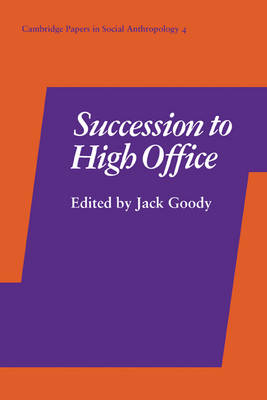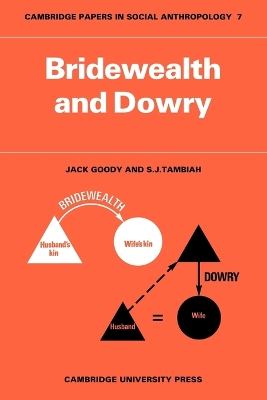Cambridge Papers in Social Anthropology
2 total works
Positions of authority in any society are limited in number, and therefore rules of selection must operate in their recruitment. There must also be limitations upon the range of authority exercised. These problems are particularly acute in the case of high office, where the questions of recruitment and succession are of central importance. This 1979 volume provides a general and theoretical analysis of succession in different traditional African societies. Jack Goody's introduction spells out the main ways in which systems of succession to office differ, and assesses the problem each system solves and the dilemmas it creates. He also analyses the tensions to which succession gives rise, and relates these to specific methods of transferring office from one generation to the next, The four case studies, all based on extensive fieldwork, consider succession among the Bausto, the Baganda, the Nyamwezi and the Gonja.
Bridewealth and dowry have certain obvious similarities in that they both involve the transmission of property at marriage, the usual interpretation suggesting that what distinguishes them is the direction in which the property travels - in the case of bridewealth, from the husband and his kin to the wife and her kin, and in the case of dowry, vice versa. The authors of these 1973 papers criticise this interpretation as oversimplified, and analyse the two institutions in the contexts of Africa, with its preponderance of bridewealth, and South Asia, where dowry is the commoner institution. Dr Goody seeks to explain these geographical differences in terms of the basic structure of the societies and the rules governing the inheritance of property. Dr Tambiah considers these institutions in India, Ceylon and Burma as two kinds of property transfer, examining Indian juridical concepts, and relating these to the concepts and practices of Ceylon and Burma.

